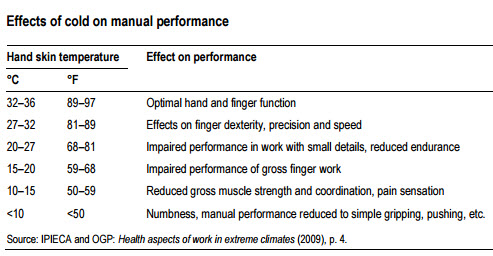Standard Operating Procedures Needed for Polar Safety
A conference organized by the International Labor Organization has highlighted the importance of the psychological wellbeing of workers and the need for standard operating procedures in ensuring safety in oil and gas operations in polar regions.
Representatives of workers, employers and governments met at the end of January to discuss occupational health and safety challenges unique to the work environment.
Dr Jonathan O Keefe, Regional Medical Director for International SOS detailed some of the extra measures that working in these climates require. As well as the more obvious concerns related to cold temperatures and ice, O Keefe pointed to the need to be aware of workers’ psychological resilience and preparedness for working in the long hours in darkness or long hours in daylight experienced in polar regions.
He said that it is important to develop standard operating procedures. If you look at the accident rate for accidents that have a human cause, he said, the absence of insufficient nature of standard operating procedures contributed to about 80 percent of them.

A report was prepared prior to the meeting to focus discussion. The report highlights statistics from the Worldwide Offshore Accident Database, one of the most comprehensive accident databases available. It contains 6,183 offshore accident reports from between 1975 and 2012, including accidents, incidents and near misses.
With respect to type of unit, fixed facilities are more likely to experience accidents than mobile units: 50 and 38 percent, respectively. In most cases, equipment malfunction was the main attributed cause for the event (34 percent), followed by ignition (26 percent). Causes related to safety systems are rarely recorded (0.18 percent). Most events were attributed to unsafe procedures (37 percent) or an absence of procedures that resulted in unsafe acts (44 percent).
In the oil and gas industry, one of the key safety challenges relating to equipment and installations is asset integrity. When offshore installations continue to work beyond their design life, they begin to raise safety concerns. A broad study of the industry found a statistically significant correlation: a one percent increase in platform age leads to a 0.3632 percent increase in the rate of accidents.
The report cites a study published in 2014 examined the prevalence of clinical depression in the workforce and found that oil and gas workers had reported high overall levels of depression compared to other industries. The researchers found that physical inactivity and stress in the workplace are the main factors affecting the rate of depression. In the Arctic, weather conditions can have a significant impact on health and performance as exposure to cold can decrease awareness, and dark, damp or severe weather conditions can contribute to depression.
Another study referenced involving more than 1,000 Norwegian offshore oil and gas workers found that workplace bullying is a stronger predictor of mental health problems than risk perception. According to the study, workers in organizations operating in environments with a high potential for risks and hazards report higher levels of stress and health problems than workers in general.
The study implies that a considerable challenge for the oil and gas industry lies in finding ways to prevent and handle bullying. In addition, given that risk perception was found to be a significant predictor of mental health problems, the industry needs to reduce its impact on workers. In this context, the oil and gas industry must give high priority to the prevention and management of stressors. As for how to protect workers, the study suggested that one way to prevent and handle workplace bullying and unhealthy risk perception may be to develop and strengthen the psychological safety climates in the organizations.
The report is available here.
Dr Jonathan O Keefe, Regional Medical Director for International SOS detailed some of the extra measures that working in these climates require.
Leif Sande of the Norwegian union Industri Energi (IE) outlined his belief that the tripartite process would be able to deliver important progress on OSH in polar and subarctic climate zones.
Valery Korzh, Director, Department of Occupational Safety and Health for the Russian Federation stressed the importance of good staff selection and advanced training to better protect workers.

that matters most
Get the latest maritime news delivered to your inbox daily.
Peter Woolford expressed confidence that the meeting will make a meaningful contribution to improving OSH for workers in these regions.
